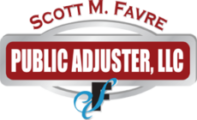After a Disaster Strikes
Home/After a Disaster Strikes
After a Disaster Strikes
favrepa
2017-10-26T09:26:51-05:00
What To Do After Disaster Strikes
- Notify your insurance company of your loss as soon as possible.
- Protect your property from further damage (natural or looting). If needed, make temporary repairs.
- Consult a Public Adjuster to see if he can help you. Make sure that the Public Adjuster is licensed in your state (if applicable).
- Remove all valuables if the property is not secure. If you must – hire security. You may be reimbursed for this expense. In general, the following are some of the emergency expenses for which you can be reimbursed, (emergency repairs must be temporary repairs if they are done before they have been approved by your insurer): boarding up a building for protection, temporary lodging or rental, temporary relocation, cleaning damaged clothing, temporary furniture and appliance rental, water extraction, appraisals of valuables, security expenses, etc.
- Make a detailed inventory list and description of every damaged item. TAKE PHOTOGRAPHS OR VIDEO AS SOON AS POSSIBLE.
- DO NOT dispose of damaged items, despite what the insurance adjuster says – they serve as proof for your claim. NEVER give an insurance adjuster your original copies of photographs. Provide copies of the photos to your adjuster and ask them to either sign for receipt of those photos or to give you an address so you can send them to the adjuster via certified mail.
- Review your insurance policy coverage and collect all records about your property. If you lost your insurance documents, request a copy from your insurance agent.
- Record all your loss-recovery activities. Document all your relevant expenses – list them and keep receipts. It is a good idea to keep a detailed log of everything related to the loss, including communication summaries (phone conversations, emails, letters – write down dates, time, with whom, what was said, etc.)
- VERY IMPORTANT: If possible, be present when the insurer’s adjuster inspects the damage. Take detailed notes. GET THE ADJUSTER’S LICENSE NUMBER AND ALL CONTACT INFORMATION. DO NOT ACCEPT “800 HURRICANE” OR SOMETHING SIMILAR AS THEIR ONLY CONTACT NUMBER. ASK FOR A LOCAL NUMBER, A FAX NUMBER, AN EMAIL ADDRESS AND THE PHYSICAL ADDRESS OF THEIR OFFICE. They are working in your town and they do have local contact information despite what some may tell you. Verify if your adjuster has a temporary “emergency” license or an established permanent license to adjust insurance claims. Some insurer’s send adjusters into the field with an “emergency” license after only three days of software training and virtually no training for construction issues. Beware of “emergency” adjusters. If the insurance adjuster handling your claim does not provide a valid license for the state in which they are working, immediately contact the department of insurance in your state.
- DO NOT SIGN ANY RELEASES OR WAIVERS for the insurance company until you are satisfied that you’ve received a fair settlement. Signing a release is not a requirement to have your claim paid in most policies, and most insurers will pay your claim without it. If an insurer pressures you to sign a release prior to your being paid for your claim immediately contact your state’s department of insurance to report this practice.
- Be wary of unsolicited advice and services. Question everything. An insurance company could try to discourage your from hiring a Public Adjuster to be an advocate on your behalf. However, in addition to this advice being illegal in many states, they may give this advice to simply maintain their advantage.
- According to FEMA, 46% of businesses which suffer a disastrous loss fail within the first year of their recovery. To prevent your business from failing plan your recovery carefully and carry out your plan. A Public Adjuster attends to the demands of your claim.
- For information about your insurance company – company history, financial data, number of justified complaints filed against it, etc. – simply search under “department of insurance” or “department of financial services” on the internet to locate the insurance regulation departments.
